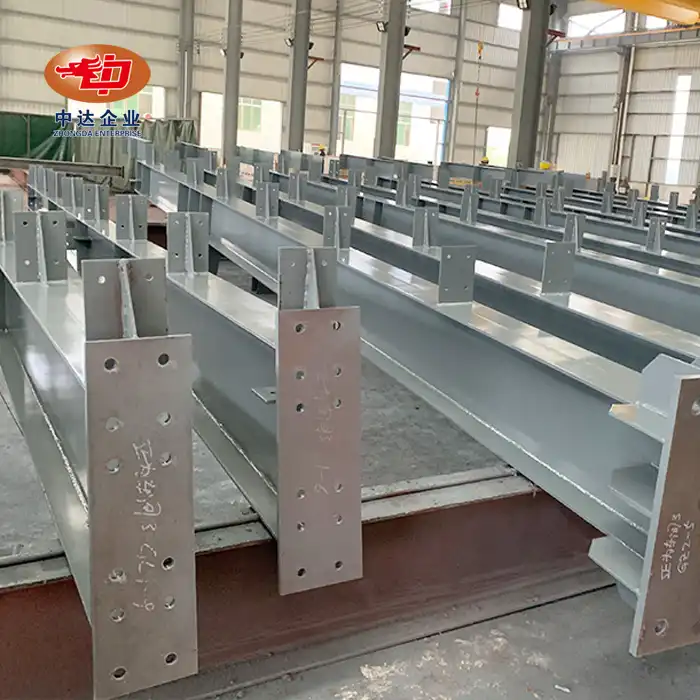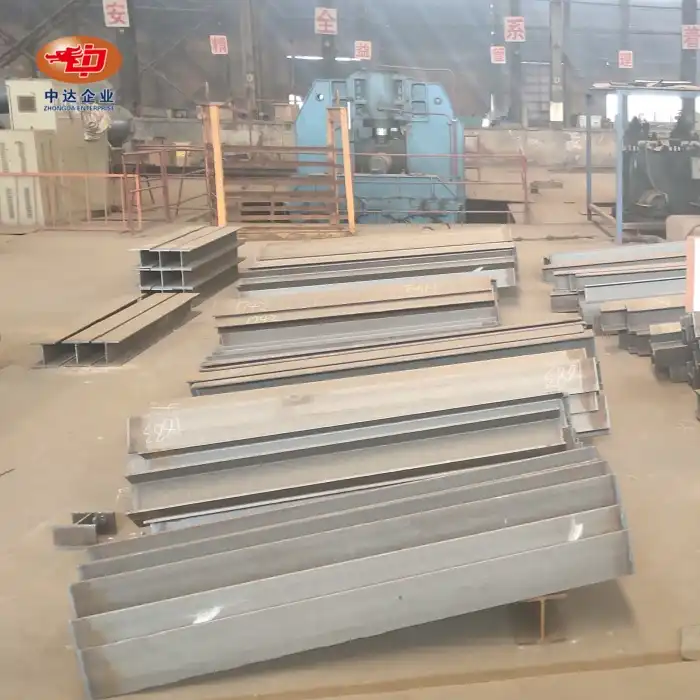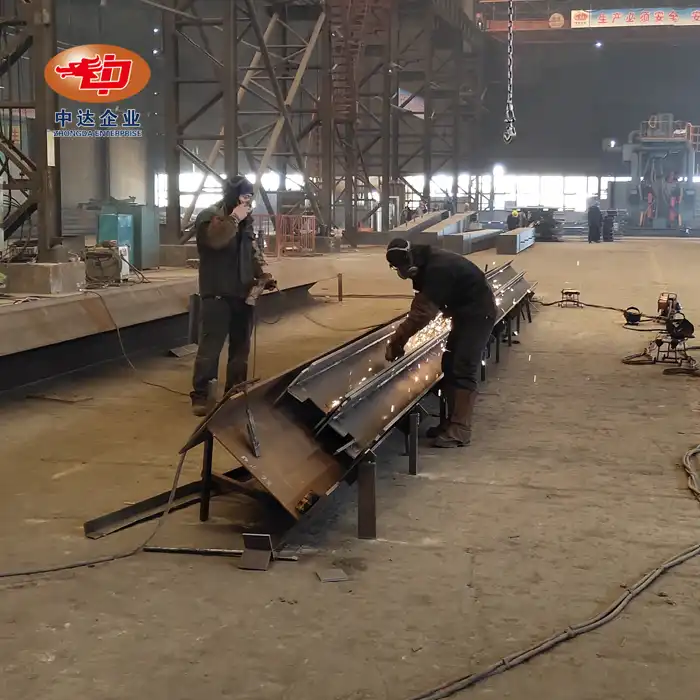The Engineering Marvel of Steel Cable-Stayed Bridges
Structural Design and Load Distribution
Steel cable-stayed bridges are marvels of modern engineering, showcasing the perfect blend of form and function. At the heart of their design is a system of cables that extend from one or more towers, supporting the bridge deck. This innovative approach allows for longer spans between supports, reducing the number of piers required and minimizing environmental impact.
The use of high-performance materials like Q420qE steel in cable-stayed bridges further enhances their structural integrity. This advanced steel grade, known for its exceptional yield strength and corrosion resistance, allows for slimmer, more elegant designs without compromising on safety. The cables, typically made of high-strength steel wires, work in tension to transfer the load from the deck to the towers, which then channel these forces into the foundation.
One of the key advantages of steel cable-stayed bridges is their efficient load distribution system. The angled cables effectively spread the deck's weight and live loads across a larger area, reducing stress concentrations and enhancing overall stability. This design also provides superior resistance to wind-induced vibrations, a critical factor in ensuring the bridge's safety during severe weather conditions.
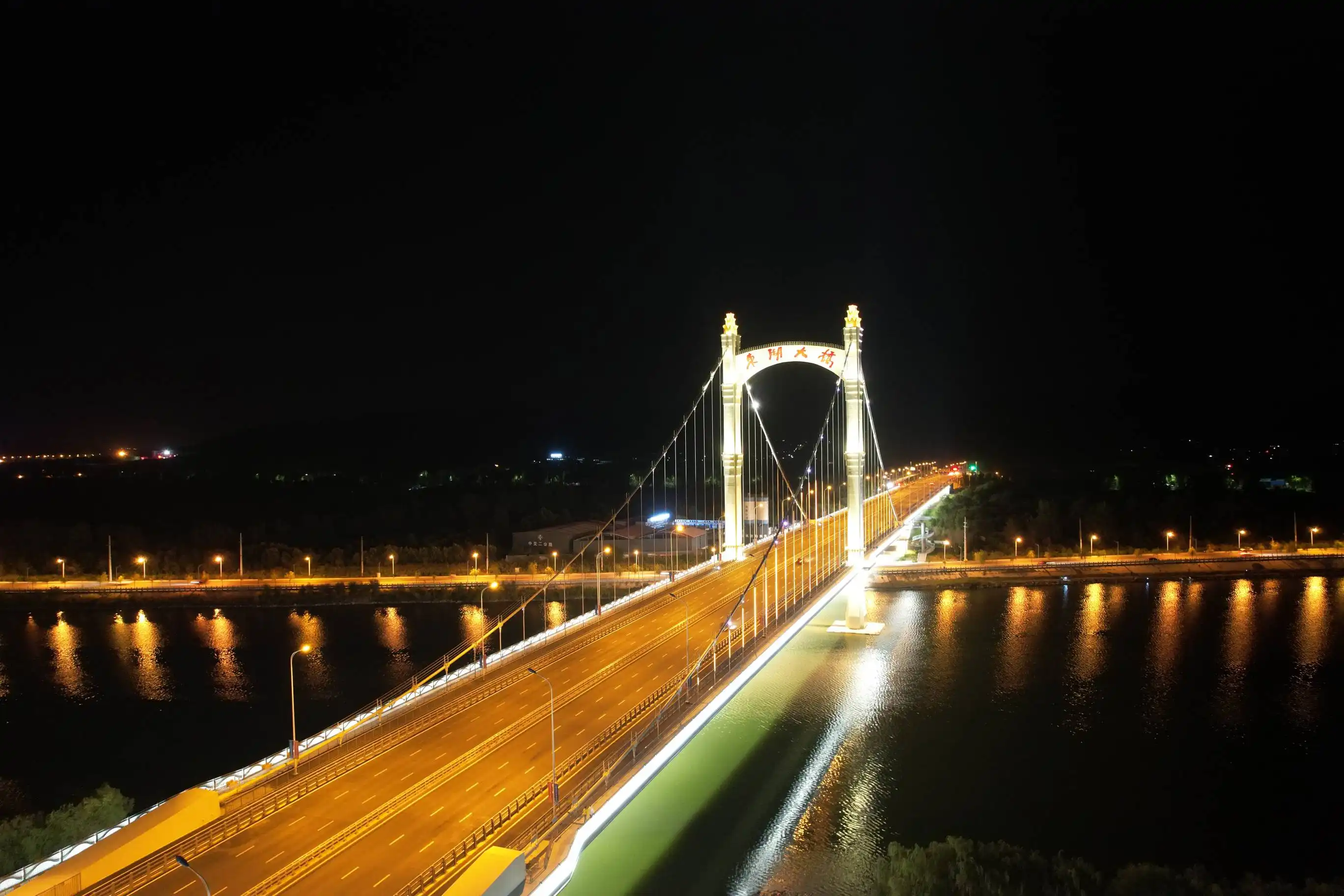
Seismic Performance and Isolation Systems
In regions prone to seismic activity, the safety of cable-stayed bridges is further enhanced through advanced seismic isolation systems. For instance, the incorporation of LRB800 type bearings can significantly reduce seismic response by up to 40%. These isolators act as a buffer between the bridge superstructure and substructure, allowing controlled movement during an earthquake and minimizing the transfer of destructive forces.
The flexibility inherent in cable-stayed bridge design also contributes to their seismic resilience. The ability of the deck to move slightly relative to the towers helps dissipate energy during seismic events, reducing the overall impact on the structure. Additionally, the use of advanced materials like Q420qE steel provides ductility, allowing the bridge to deform under extreme loads without catastrophic failure.
Shenyang Zhongda Steel Structure Engineering Co., Ltd. employs state-of-the-art seismic design principles in their cable-stayed bridge projects, ensuring optimal performance even in earthquake-prone regions. Their expertise in integrating seismic isolation systems with high-performance steel structures results in bridges that offer unparalleled safety and reliability.
Wind Resistance and Aerodynamic Design
Wind forces pose a significant challenge to bridge safety, particularly for long-span structures. However, steel cable-stayed bridges are inherently well-suited to resist wind loads due to their aerodynamic design. The streamlined profile of these bridges, combined with carefully engineered deck sections, helps minimize wind resistance and reduce the likelihood of dangerous oscillations.
Advanced computer modeling and wind tunnel testing play a crucial role in optimizing the aerodynamic performance of cable-stayed bridges. These techniques allow engineers to predict and mitigate potential wind-induced vibrations, ensuring the bridge remains stable even under extreme wind conditions. The use of wind fairings, tuned mass dampers, and other aerodynamic devices further enhances the bridge's ability to withstand high winds safely.
Zhongda Steel's expertise in BIM-based digital design allows for precise optimization of bridge aerodynamics. By leveraging cutting-edge simulation tools, they can fine-tune the bridge's geometry to achieve optimal wind performance without compromising structural integrity or aesthetic appeal.
Material Innovation and Durability
High-Performance Steel in Bridge Construction
The advent of high-performance steel grades like Q420qE has revolutionized cable-stayed bridge construction. This advanced material offers an exceptional combination of strength, ductility, and corrosion resistance, allowing for more efficient and durable bridge designs. The superior yield strength of Q420qE steel enables the use of thinner sections, reducing the overall weight of the structure without compromising safety.
In cable-stayed bridges, Q420qE steel is typically used in critical components such as the main towers and deck elements. Its high strength-to-weight ratio allows for longer spans and more slender profiles, enhancing both the aesthetics and functionality of the bridge. Moreover, the material's excellent weldability ensures strong, reliable connections throughout the structure.
Shenyang Zhongda Steel Structure Engineering Co., Ltd. specializes in the fabrication and implementation of Q420qE steel in cable-stayed bridge projects. Their advanced manufacturing capabilities, including precision CNC cutting and state-of-the-art welding techniques, ensure that each steel component meets the highest quality standards, contributing to the overall safety and longevity of the bridge.
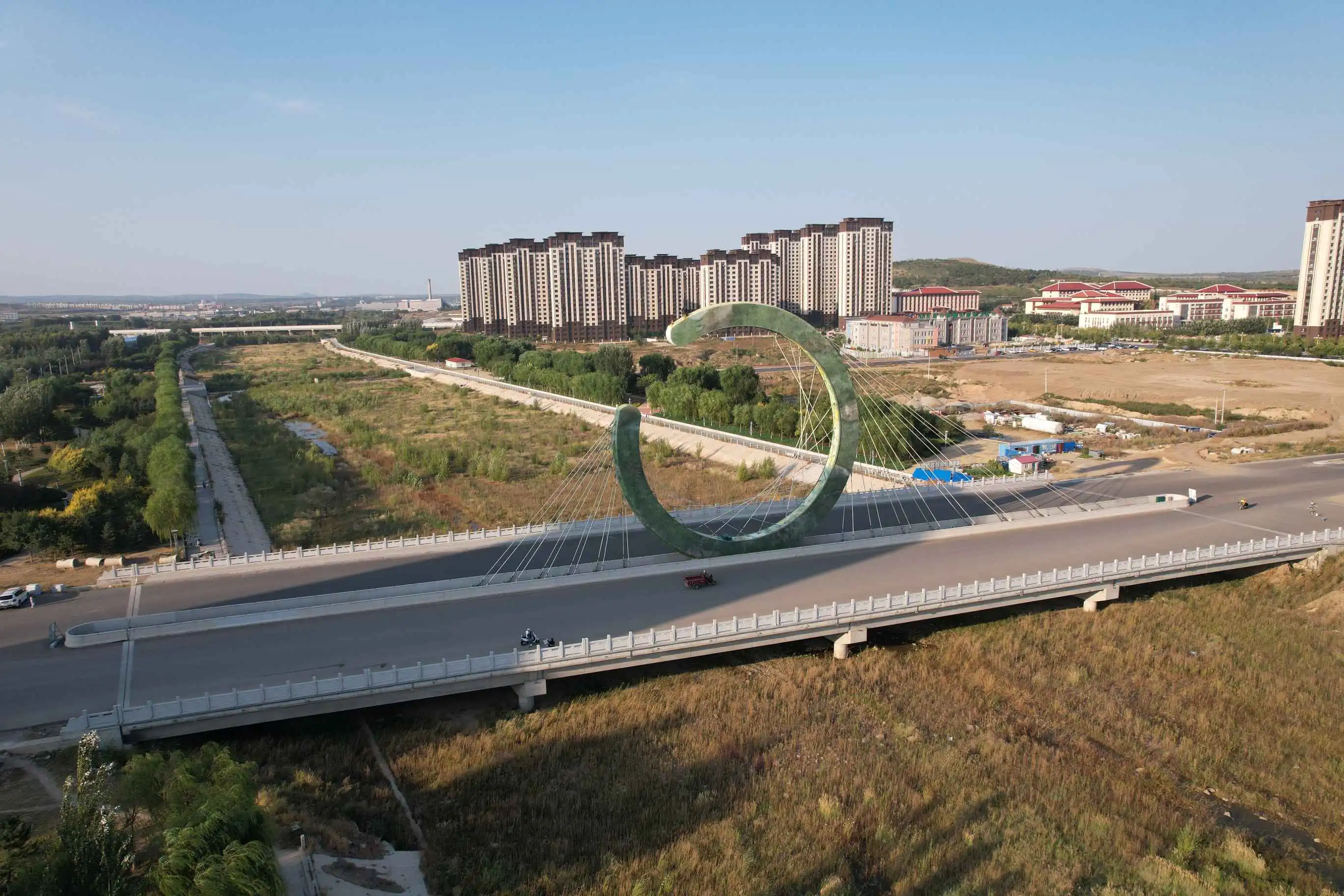
Cable Technology and Durability
The cables are the lifeline of any cable-stayed bridge, and their durability is paramount to the structure's safety. Modern cable-stayed bridges utilize high-strength steel wires, often with diameters around 7mm, compliant with stringent standards such as EN 10138. These wires are bundled together and protected by corrosion-resistant sheaths, ensuring long-term performance even in harsh environmental conditions.
Advanced anchorage systems, like the OVM250 type, provide secure and efficient load transfer between the cables and the bridge structure. These systems are designed to withstand enormous tensile forces while allowing for adjustments and replacements if necessary, contributing to the bridge's overall safety and maintainability.
Zhongda Steel's expertise extends to the integration of cutting-edge cable technologies in their bridge designs. By combining high-performance materials with innovative anchorage solutions, they ensure that the cable system remains a reliable and durable component of the bridge throughout its lifespan.
Corrosion Protection and Lifespan Enhancement
Ensuring the longevity of steel cable-stayed bridges is critical for both safety and economic reasons. Modern corrosion protection systems have significantly extended the lifespan of these structures. For instance, the use of PE outer sheaths combined with graphene-enhanced inner coatings can provide up to 53 years of UV resistance, dramatically reducing maintenance requirements and enhancing long-term safety.
In addition to protective coatings, modern bridge designs incorporate corrosion-resistant alloys and cathodic protection systems to further safeguard against deterioration. Regular inspections and maintenance, facilitated by advanced monitoring technologies, help identify and address potential issues before they compromise the bridge's integrity.
Zhongda Steel's commitment to durability is evident in their innovative approach to corrosion protection. By implementing state-of-the-art coating technologies and material solutions, they ensure that their cable-stayed bridges remain safe and functional for decades, minimizing lifecycle costs and environmental impact.
Safety Monitoring and Maintenance
Advanced Inspection Technologies
Ensuring the ongoing safety of steel cable-stayed bridges requires rigorous inspection and monitoring protocols. Modern bridges are equipped with an array of sensors and monitoring systems that provide real-time data on structural behavior, allowing engineers to detect potential issues before they escalate into safety concerns.
One of the most advanced inspection techniques employed in cable-stayed bridges is 3D coordinate detection. This method, often utilizing high-precision total stations with accuracies up to 0.5″, allows for extremely detailed measurements of the bridge's geometry. By comparing these measurements over time, engineers can identify even minute changes in the structure's alignment or shape, which could indicate underlying problems.
Shenyang Zhongda Steel Structure Engineering Co., Ltd. incorporates these cutting-edge inspection technologies into their bridge designs from the outset. Their expertise in BIM-based digital design facilitates the integration of monitoring systems, ensuring comprehensive coverage and easy access for maintenance personnel.
Preventive Maintenance Strategies
Preventive maintenance is crucial for preserving the safety and longevity of steel cable-stayed bridges. This proactive approach involves regular inspections, cleaning, and minor repairs to prevent the development of more serious issues. Key areas of focus include the cable anchorages, expansion joints, and bearings, which are subject to wear and environmental stresses.
Modern maintenance strategies often incorporate predictive techniques, leveraging data from monitoring systems to anticipate when components may require attention. This approach allows for more efficient resource allocation and minimizes disruptions to bridge operations.
Zhongda Steel's comprehensive approach to bridge engineering includes detailed maintenance planning. Their designs facilitate easy access to critical components, and they provide clients with comprehensive maintenance manuals and training to ensure optimal long-term performance of their structures.
Emergency Response and Retrofitting
Despite the robustness of steel cable-stayed bridges and rigorous maintenance protocols, it's essential to have emergency response plans in place. These plans outline procedures for rapid assessment and intervention in the event of unexpected damage or extreme weather conditions.
In some cases, older cable-stayed bridges may require retrofitting to meet current safety standards or address specific vulnerabilities. This process might involve strengthening key structural elements, upgrading seismic isolation systems, or enhancing corrosion protection. The flexibility inherent in cable-stayed bridge design often allows for such upgrades without necessitating complete replacement of the structure.
Zhongda Steel's expertise extends beyond new construction to include retrofitting and upgrading existing bridges. Their team of experienced engineers can assess older structures and develop tailored solutions to enhance safety and extend service life, ensuring that these vital infrastructure assets continue to serve communities safely for years to come.
Conclusion
Steel cable-stayed bridges stand as a testament to modern engineering prowess, offering a remarkable combination of safety, efficiency, and aesthetic appeal. Through innovative design principles, advanced materials like Q420qE steel, and rigorous maintenance protocols, these structures provide secure and reliable transportation links across challenging terrains. As technology continues to evolve, so too does the safety and performance of cable-stayed bridges, ensuring they remain a cornerstone of infrastructure development worldwide.
Contact Us
Ready to elevate your infrastructure project with cutting-edge steel cable-stayed bridge technology? Trust Zhongda Steel to deliver unparalleled quality, innovation, and safety. Our Q420qE Steel Cable-Stayed Bridges combine advanced engineering with superior materials, ensuring longevity and performance. Contact us today at Ava@zd-steels.com to discuss how we can bring your vision to life with our world-class expertise and state-of-the-art solutions.











